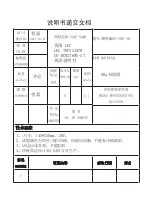
. . . the compressor is switching in
too frequently and for too long.
^
Check whether the ventilation gaps in
the plinth and in the housing unit at
the top have been covered over or
become too dusty.
^
The doors have been opened too
frequently, or a large amount of fresh
food has been put in at once for
freezing.
^
Check that the doors have been
closed properly.
^
Check to see whether a thick layer of
ice has built up in the freezer. If it
has, then the freezer section will
need defrosting.
. . . the compressor runs
continuously.
To save energy, the compressor runs at
a lower speed, but for longer, when less
cooling is required.
. . . the frozen food is thawing
because the freezer section is too
warm.
^
Is the room temperature lower than
the ambient temperature for which
the appliance is designed?
If so, raise the temperature of the
room.
Operating in a room which is too cold
will cause the cooling system to switch
off for too long causing the freezer
section to become too warm.
. . . food has frozen together.
Use a blunt instrument, e.g. a spoon
handle or plastic scraper, to prise it
apart carefully.
. . . there is a thick layer of ice in the
freezer section.
^
Check whether the freezer section
door closes properly.
^
Defrost and then clean the freezer
section.
Too thick a layer of ice reduces
efficiency and increases energy
consumption.
^
Close the door.
. . . the alarm sounds and the freezer
section temperature display flashes.
The freezer section temperature has
risen above the set temperature
because
^
the freezer section door has been
opened too frequently, or large
amounts of fresh food have been put
in at once for freezing.
The alarm will stop and the temperature
display will light up constantly again as
soon as the temperature has dropped
down to the correct level again.
Problem solving guide
42
Summary of Contents for KF 9757 iD
Page 61: ...61 ...
Page 62: ...62 ...
Page 63: ...63 ...
Page 64: ...Alteration rights reserved 0407 KF 9757 iD M Nr 07 021 340 00 en GB ...
















































